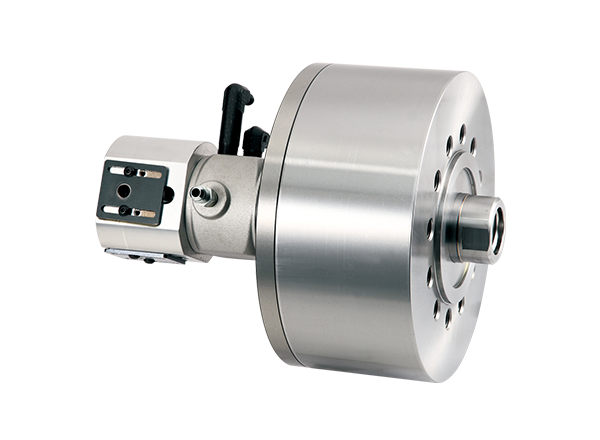
PRODUCTS
HYDRAULIC CYLINDER
TCseries (Closed center hydrauilc cylinder - Built-in check calve & Switch brackets) HYDRAULIC CYLINDER
• Built-in check valve.
• The bracket for proximity switch. (The proximity switches are extra option)
LEARN MORE • The bracket for proximity switch. (The proximity switches are extra option)

The Rotary Hydraulic Cylinder is the core driving component that operates hydraulic power chucks. By applying hydraulic pressure, the piston moves back and forth, transferring force to the internal mechanism of the chuck to enable precise clamping and releasing actions. It is typically mounted on the rear end of the machine spindle, and must offer quick response, high stability, and robust pressure resistance—especially in high-speed or heavy-cutting operations.
Hydraulic cylinders are available in different types depending on the chuck and machine setup:
1. Hollow Hydraulic Cylinder: Features a through-hole in the cylinder body, allowing bars, cables, air hoses, or pipes to pass through. This is ideal for bar feeding systems, multitasking machines, and signal/power transmission.
2. Solid Hydraulic Cylinder: Offers a compact, rigid structure with strong clamping force, suitable for setups that do not require internal passage.
Some cylinders are specifically designed with rotary and through-passage capabilities, making them ideal for applications that demand rotation, signal transmission, and automation integration—widely used in automated systems, heavy-duty machining equipment, and robotic platforms.
Hydraulic cylinders are available in different types depending on the chuck and machine setup:
1. Hollow Hydraulic Cylinder: Features a through-hole in the cylinder body, allowing bars, cables, air hoses, or pipes to pass through. This is ideal for bar feeding systems, multitasking machines, and signal/power transmission.
2. Solid Hydraulic Cylinder: Offers a compact, rigid structure with strong clamping force, suitable for setups that do not require internal passage.
Some cylinders are specifically designed with rotary and through-passage capabilities, making them ideal for applications that demand rotation, signal transmission, and automation integration—widely used in automated systems, heavy-duty machining equipment, and robotic platforms.
